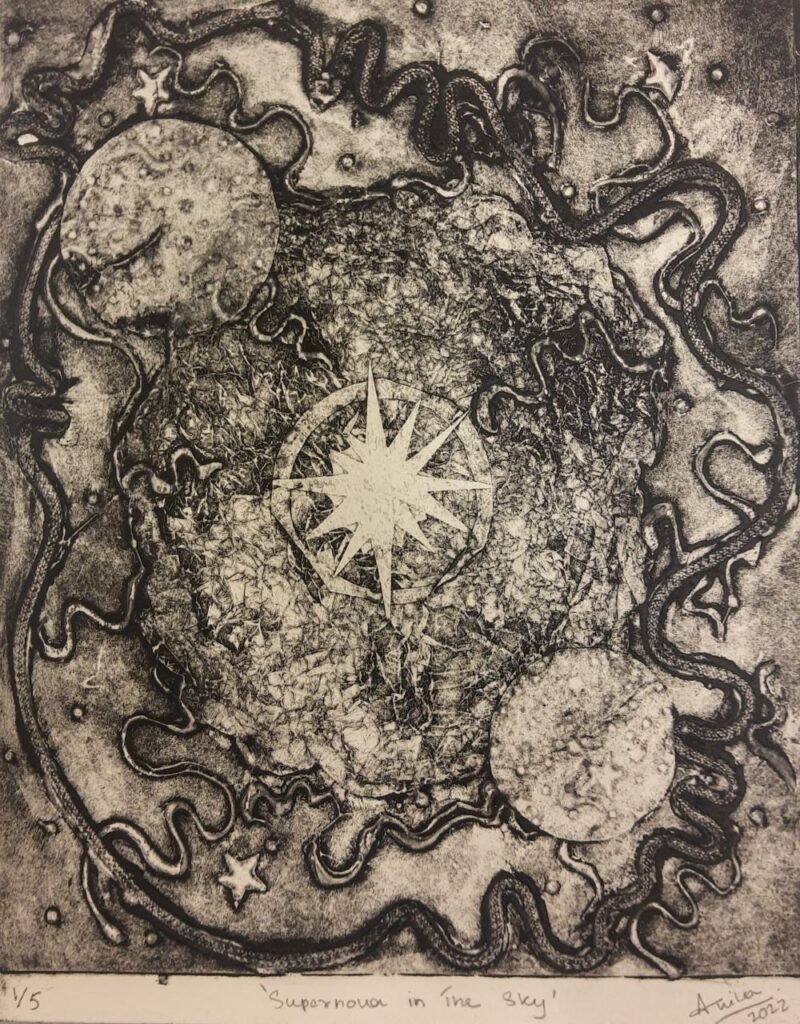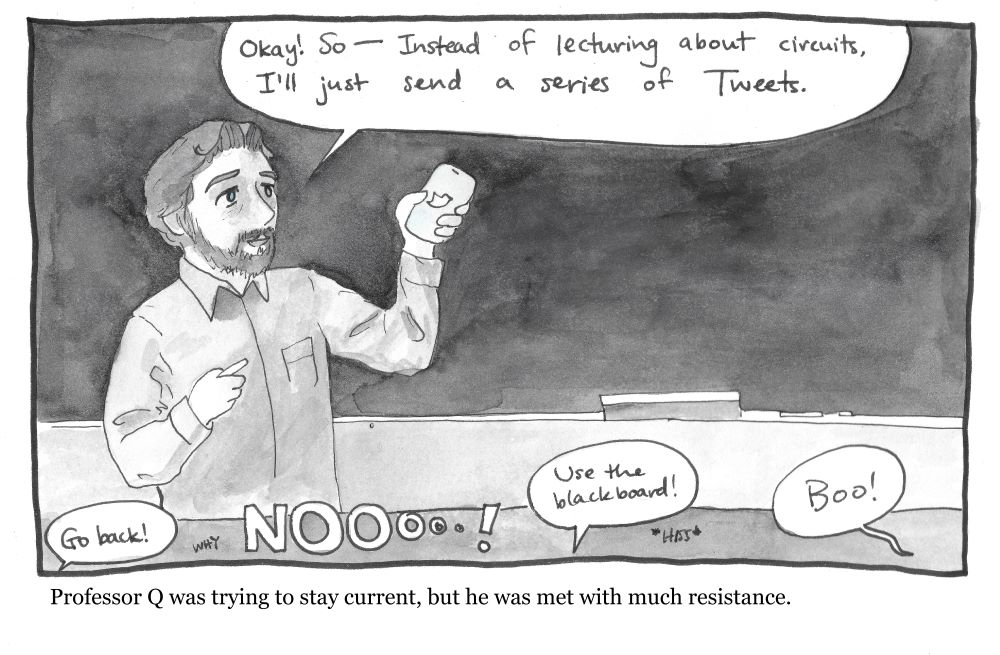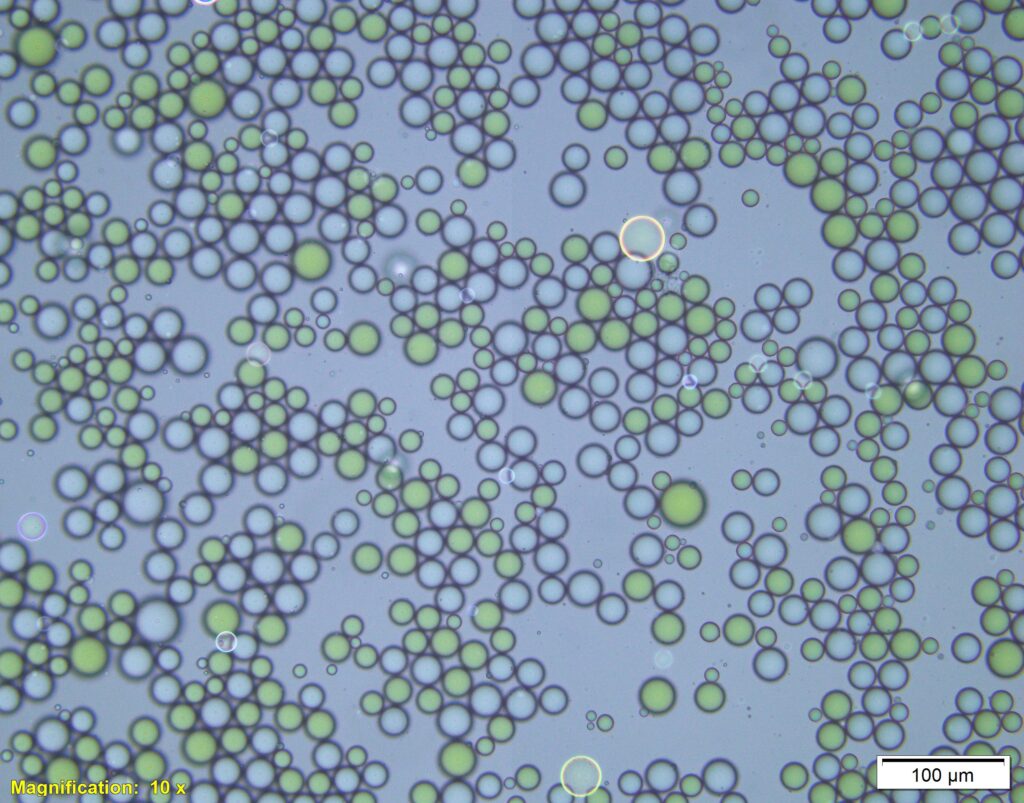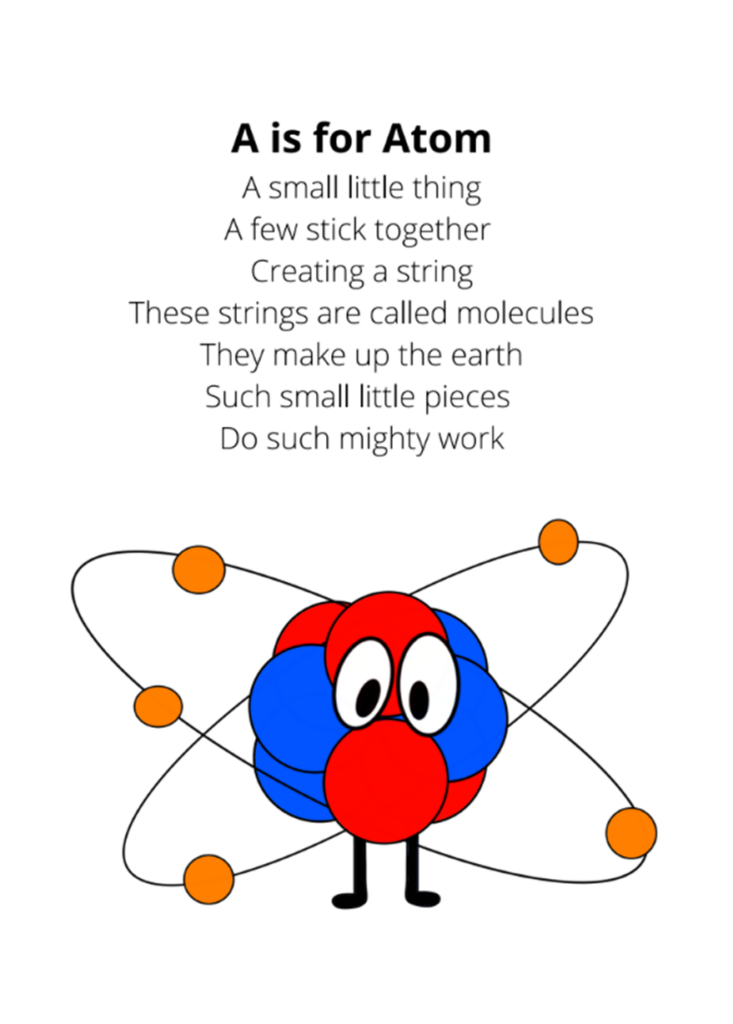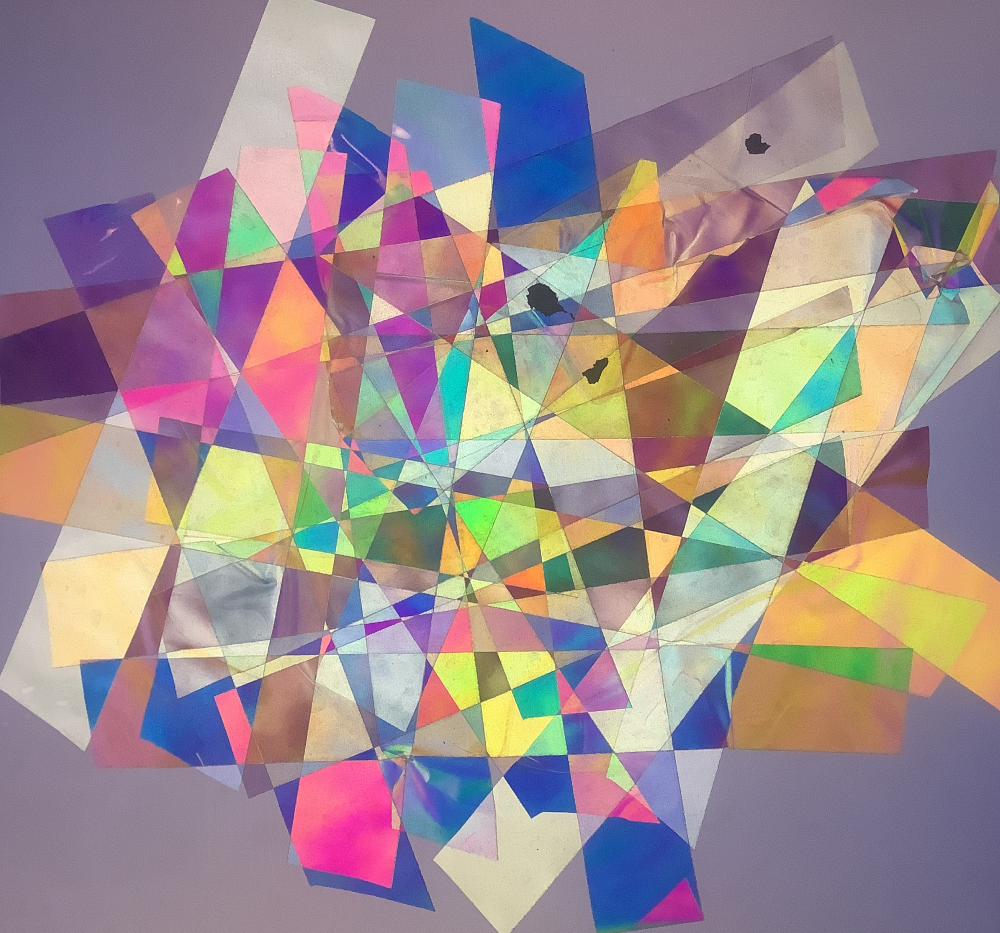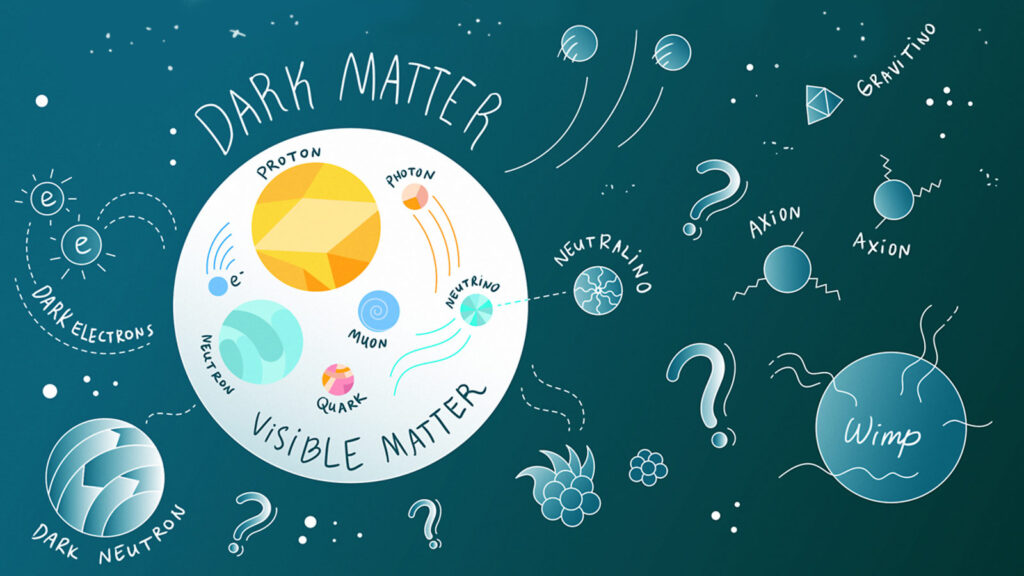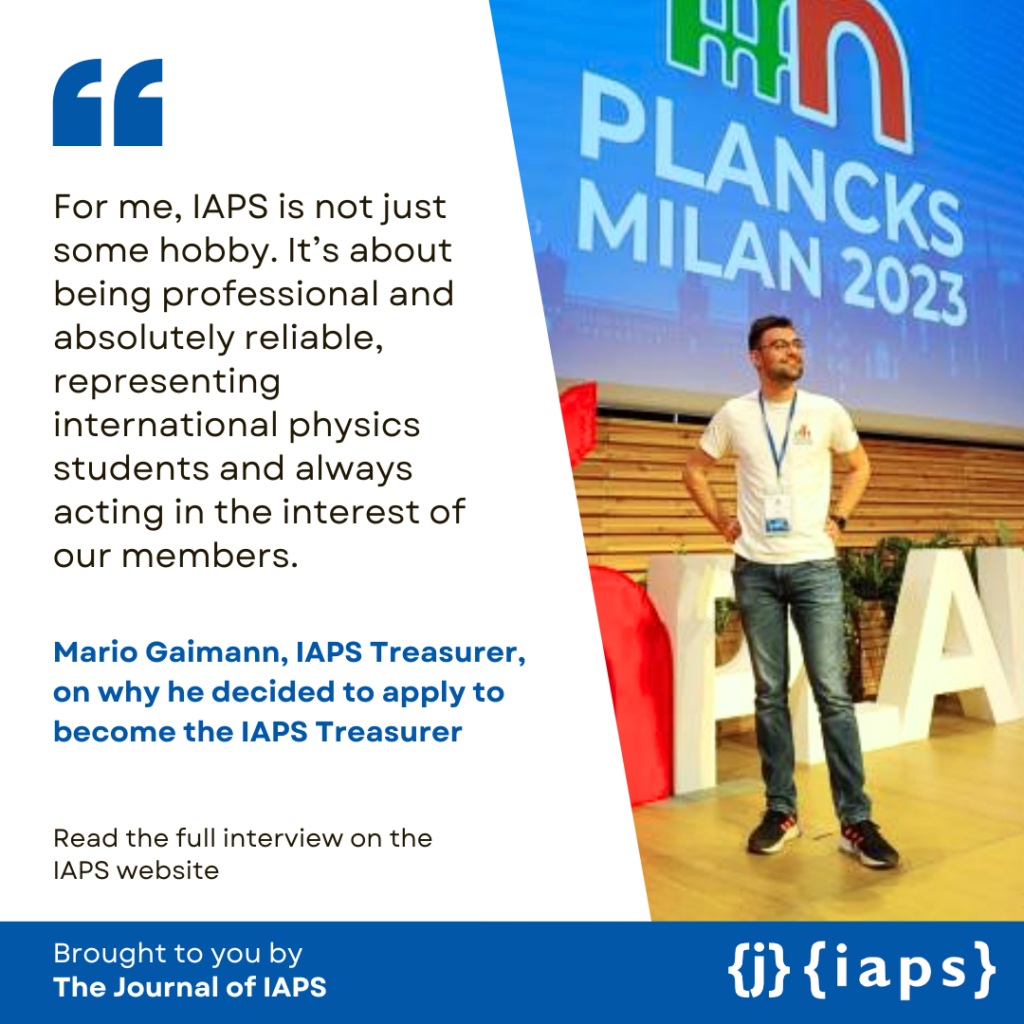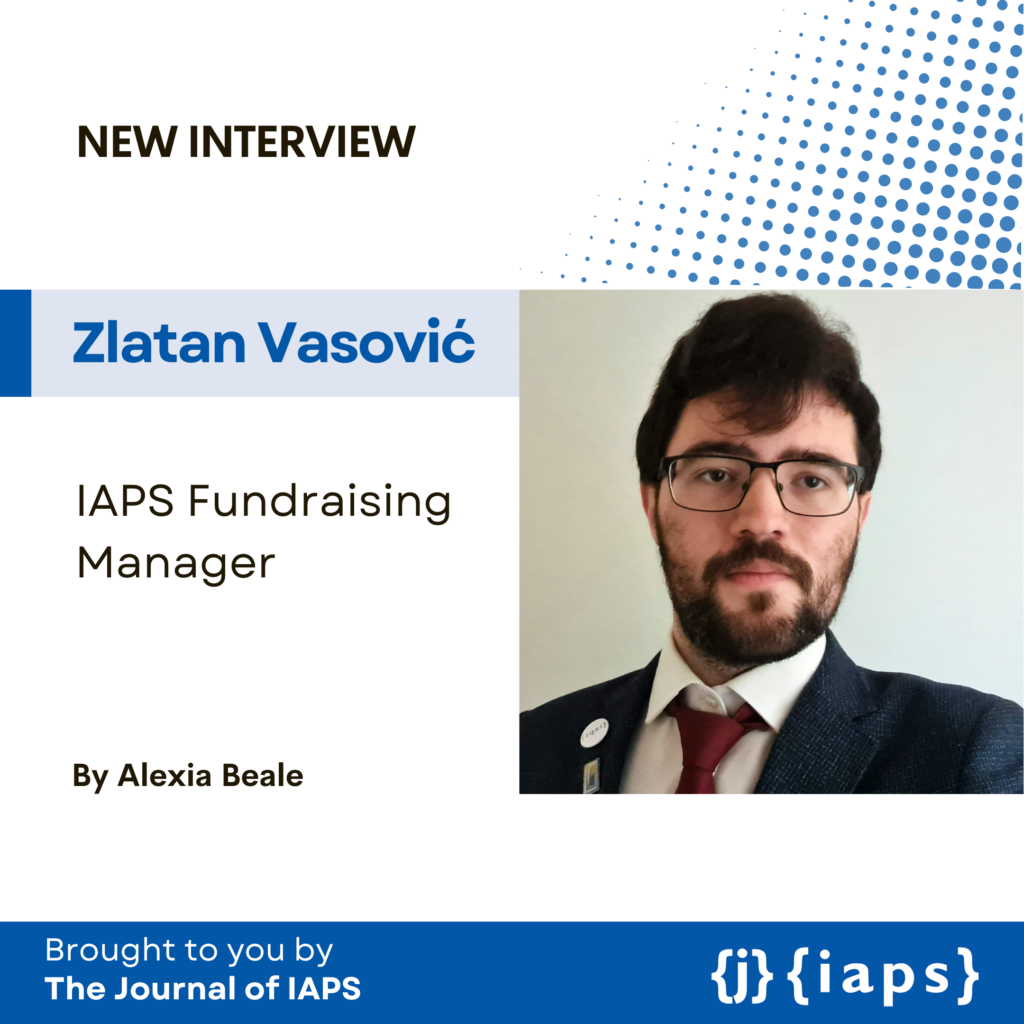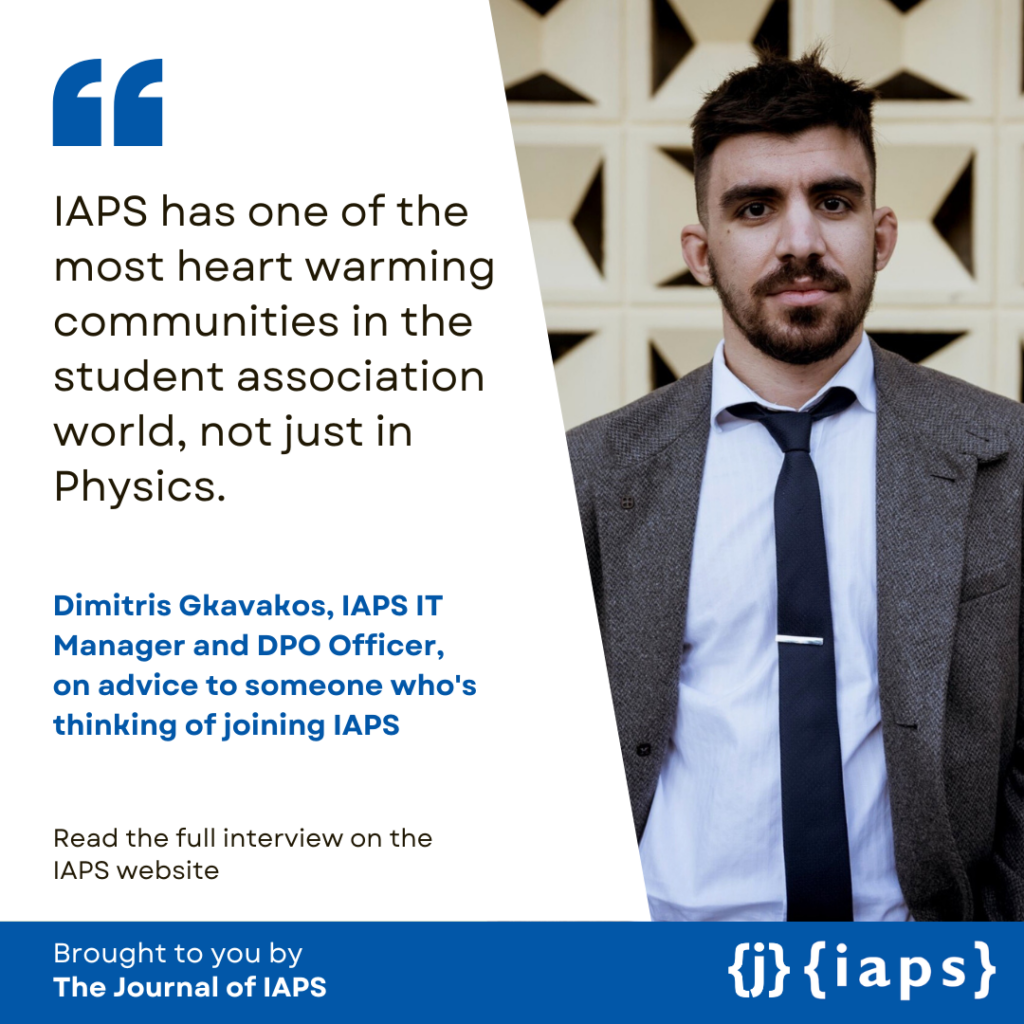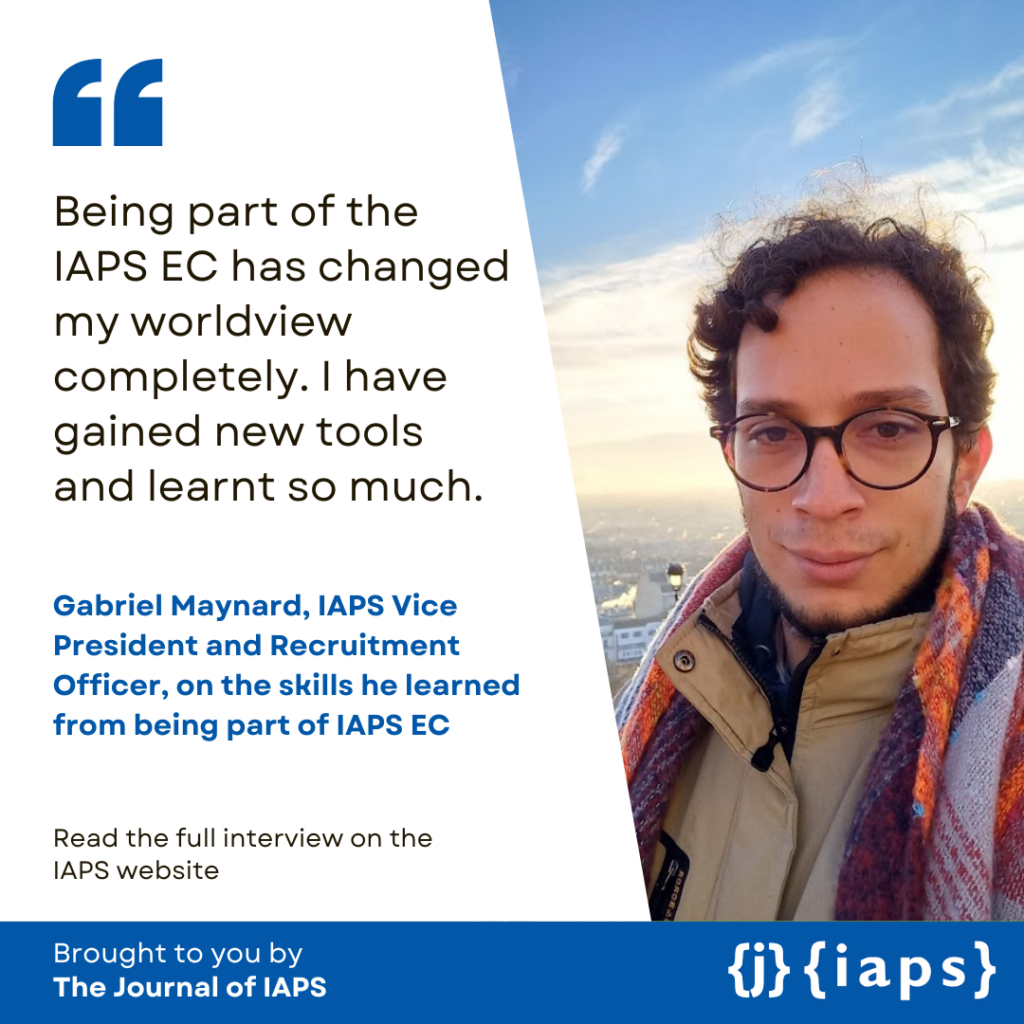
Here’s the latest in the series of EC Interviews – the jIAPS Editor-in-Chief challenged themselves to interview all of the EC members before the end of the year. This one was completed on time, but we’ve only just got around to uploading it.
This time, it is the turn of Niloofar, the IAPS Events Manager, to be interviewed:
What are you currently studying?
I’ve just graduated from my Bachelor’s degree in Physics, Astroparticle Physics subdivision, at Isfahan University of Technology in Iran. I’m looking for the next step for graduate studies and considering options for PhD.
What does your role as IAPS Events Manager involve?
My main task is to supervise, maintain and assure that all events are completed successfully, and to support every Organising Committee (OC) along the way on behalf of the EC. This may sound cringy, but it often feels like a motherhood experience where you feel equally and deeply responsible for every single detail about each event as if it’s your child but you also believe in the OCs, respecting them to thrive freely and have their own creativity towards a successful event. To state the obvious, the events IAPS organises would not be as great without their amazingly dedicated and skilled OCs. The role of the Events Manager is to be present in the background, providing support and guidance, and making sure that everything is going well.
Every single IAPS event is close to my heart – I want to be available 24/7 to them. It doesn’t matter whether they have an IT or a financial issue, or if a hotel is not going along with the room bookings, it is my responsibility to jump in. The Events Manager also has the knowledge and connections to direct the OCs to more skilled people in a particular area.
Which events have you supported this year?
ICPS 2023 (International Conference for Physics Students), PLANCKS 2023 (Physics League Across Numerous Countries for Kick-ass Students), IPT 2023 (International Physicists’ Tournament) – they are the main ones, the major ones in 2023. I also joined IAPS4Materials and represented IAPS at the ‘Women of the World in Physics!’ Event, the second edition of which will be jointly organized by IAPS. There are also the events from the previous year which I have a smaller contribution to, completing the final steps of PLANCKS 2022 and ICPS 2022. Then, we are continuing the process for PLANCKS 2024 and ICPS 2024.
What is your favourite event that you have supported as IAPS Events Manager?
That is like asking which is my favourite child – once again all of the events are close to my heart. I got to experience PLANCKS 2023 in person and it was amazing. I’m also looking forward to ICPS 2023. All of the events are great!
At PLANCKS 2023, you had to introduce IAPS at the Opening Ceremony. Do you enjoy the public speaking element to being IAPS Events Manager?
In IAPS, the community is always friendly and warm, making you forget about the worries of a big stage. So since the beginning I found any presentation very comfortable and enjoyable, which is honestly the best practice for soft skills improvement. As soon as I stand up to speak, it feels like talking to a big group of friends!
What are some of the biggest obstacles of supporting events?
This is completely different with smaller events and major ones. With major events, these are big projects, and you have a team of very dedicated people involved for two years. As the time gets closer to the event, the pressure becomes really high. The role of the IAPS Events Manager is to dial down the pressure and by clear guidance make sure that the OC feels supported. As for minor events, I would say an obstacle is to maintain consistency as these events must take place more frequently. For these OCs, members are expected to remain in the project in a shorter period of time. This means a totally new OC composition is required for the next edition in only a few months. So once the project is over, finding a new OC and transferring the knowledge may be a bit challenging.
Who do you have to work closely with in your role as Events Manager – both on the IAPS EC (Executive Committee) and beyond it?
Outside of the EC and before the OCs, the Events Secretary is the main one, aware of the details of the job obviously as the main source of assistance for the Events Manager; however, the IAPS Events Manager is connected to almost all areas of IAPS and you have to remain in really close contact with everyone involved. I’d have to name all the EC members… Who do I have to work most closely with on the EC? I’d say Cyrus (President), Mario (Treasurer) and Gabriel (Vice-President and Recruitment Officer).
On the management side, I have to keep in contact with the president(s) of each OC. There were times when we had meetings with the OC of a major event which lasted two or three hours – these meetings were long but a blessing and absolutely essential. The details of the event become very important. You have to work long hours for these meetings and it may seem really strange, but I suppose that’s the side of the story unseen by many. From these long meetings, you sometimes feel closer and attached to that event even more than you already have, which is a beautiful experience on its own.
I’ve just thought of another question from that answer – approximately how many people have you become in close contact with through being IAPS Events Manager that you wouldn’t have spoken to otherwise?
How many? Many, many people… I don’t think I can put an accurate number on it. I’ll go with fifty or more, regarding people I’ve worked with directly – and maybe twenty people I have been contacting as a weekly routine and know well – but I’m sure it’s more than that. These are the people I’ve spoken to regularly.
What skills do you need to become IAPS Events Manager?
You need a complete set of skills! The most important is perhaps time management – you have a lot of tasks and ongoing projects, as well as projects which have already happened and those upcoming events. The workload is no joke. Also, the ability to communicate with different OCs – each is from a different country, with a different culture which is very exciting; they are truly international. It can be a challenge to choose the pace each OC feels comfortable to go with while securing the success of the tasks; so you definitely need communication skills and time management on top of everything else.
How can IAPS members get involved with organising events?
It’s very simple: just drop an email to events@iaps.info. If you have a brand new idea for an event, we’d love to hear from you. The EC is there to guide you, as the organising committee of an event, and to provide support for you, so you can learn step-by-step as you organise the event. Organising events may seem scary from the outside, but the EC is very supportive and can show you the way. You shouldn’t be hesitant about contacting us – whatever idea you have within IAPS context, we’ll find a place for it!
How have you found the experience of being part of the IAPS EC?
It has been quite a challenging experience for me this year. There have been some environmental difficulties in my country which have provided some serious challenges and affected my work pace as well. But even though this happened to me on a personal level,… how can I phrase it? IAPS is more than an association. I have gained friends for life. I am grateful for the support of my fellow EC members. I’ve learnt lots of lessons and definitely enjoyed this experience. This is more than a community; it is like a family. You are involved in so many things for such a long time, it really helps to form unbreakable bonds. Having such valuable friendships touches upon personal development as well.
What has been one of your best moments as part of the IAPS EC this year?
The ending of the Mulhouse meeting* – it was the first time we had all met each other. By the end of the meeting, we really felt like a team, gathered together and backing each other up. When you’ve been working for a year together and only meeting through the screen, it’s hard to create the human element of the community. Meeting in person was amazing.
*You mentioned the Mulhouse meeting. Can you summarise what this is?
Sure! IAPS as an association has its official seat in Mulhouse, France, where the headquarters of the European Physical Society (EPS) is located. The Mulhouse meeting is a memorable and important time of the year when the respective IAPS EC of the term gather from all around the world to meet in person in the headquarters of EPS, in order to have constructive discussions over the work plan of the term and much more. It usually happens a few months into the EC term, around December.
In a nutshell, it means about a week of highly intense and productive meetings in Mulhouse, nice IAPS stickers EVERYWHERE, accompanied by even nicer people but very bad weather, ending it all with a wholesome EC photo in IAPS t-shirts (no jackets on!), in -1 °C outdoors in front of the EPS building, questioning your life decisions – things we do for IAPS!
The bids for PLANCKS 2025 and ICPS 2025 are currently open. Can you summarise why people should bid to be the organisers of one of these events?
In a nutshell, it’s awesome. Both are very huge projects. The process takes two years, plus the aftermath. At the end of the day, it leaves you with a very valuable experience. The result of your work is something which people, as participants of the event, remember for a long time. On the surface, it is just a conference or a competition, but it’s actually a life-changing experience – I’m not exaggerating here. These are actual words we’ve received from participants. It’s that beautiful. You as an organiser of these events get a chance to gain and create awesome experiences for physics students around the world, and an amazing time for everyone.
The interview concluded with reminiscences of previous IAPS events.

